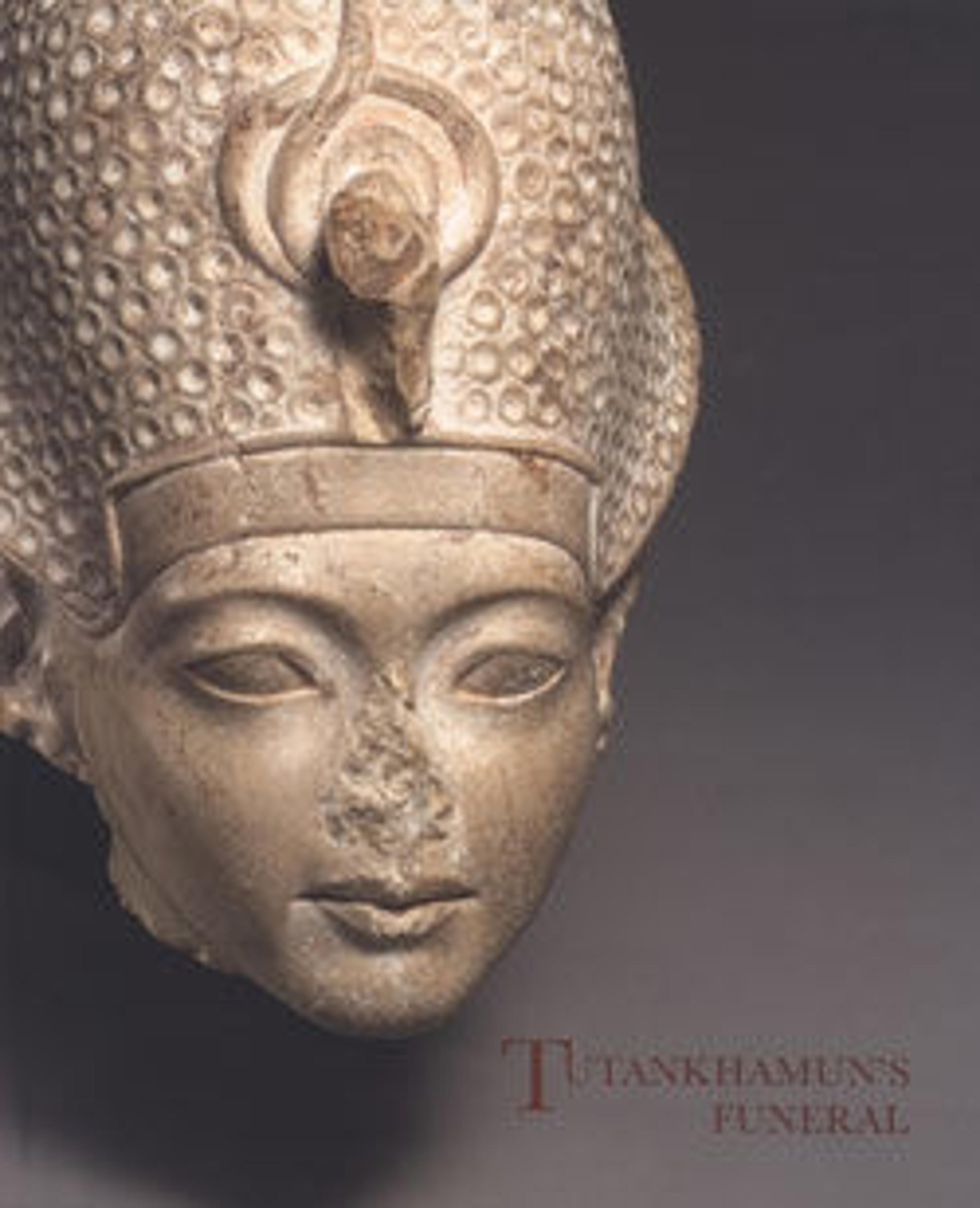Large Storage Jar from Tutankhamun's Embalming Cache
In 1907, a small pit (KV 54) was discovered in the Valley of the Kings. It contained a dozen or so large sealed storage jars, including this one. Inside the jars was an assortment of objects carefully packed in chaff. These included: broken pottery (09.184.21); linen bags of natron, the salt used in mummification; animal bones; floral collars (09.184.216); linen kerchiefs (09.184.217); pieces of linen inscribed with the cartouche of an obscure king named Tutankhamun (09.184.693); and mud sealings stamped with the seal of the royal necropolis (09.184.261) and cartouches of the same king (09.184.260).
Careful study of the material found in the jars suggests that the natron and linen were unused embalming materials from the mummification of Tutankhamun. The broken pottery, animal bones, and floral collars may have been used in the offering and purification ceremonies performed at the king's funeral. Fifteen years after Davis found the embalming cache, Tutankhamun became famous when his tomb, KV 62, was discovered by Howard Carter and the Earl of Carnarvon who had begun work in the Valley of the Kings after Davis gave up his exclusive concession to work there.
For more on the discovery, see the Curatorial Interpretation.
Careful study of the material found in the jars suggests that the natron and linen were unused embalming materials from the mummification of Tutankhamun. The broken pottery, animal bones, and floral collars may have been used in the offering and purification ceremonies performed at the king's funeral. Fifteen years after Davis found the embalming cache, Tutankhamun became famous when his tomb, KV 62, was discovered by Howard Carter and the Earl of Carnarvon who had begun work in the Valley of the Kings after Davis gave up his exclusive concession to work there.
For more on the discovery, see the Curatorial Interpretation.
Artwork Details
- Title: Large Storage Jar from Tutankhamun's Embalming Cache
- Period: New Kingdom
- Dynasty: Dynasty 18
- Reign: reign of Tutankhamun
- Date: ca. 1336–1327 B.C.
- Geography: From Egypt, Upper Egypt, Thebes, Valley of the Kings, Embalming Cache of Tutankhamun (KV 54), Davis/Ayrton excavations, 1907–08
- Medium: Pottery, whitewash
- Dimensions: H. 71.5 cm (28 1/8 in.); Diam. 48 cm (18 7/8 in.); Diam. of rim 35 cm (13 3/4 in.)
- Credit Line: Gift of Theodore M. Davis, 1909
- Object Number: 09.184.1
- Curatorial Department: Egyptian Art
More Artwork
Research Resources
The Met provides unparalleled resources for research and welcomes an international community of students and scholars. The Met's Open Access API is where creators and researchers can connect to the The Met collection. Open Access data and public domain images are available for unrestricted commercial and noncommercial use without permission or fee.
To request images under copyright and other restrictions, please use this Image Request form.
Feedback
We continue to research and examine historical and cultural context for objects in The Met collection. If you have comments or questions about this object record, please contact us using the form below. The Museum looks forward to receiving your comments.
